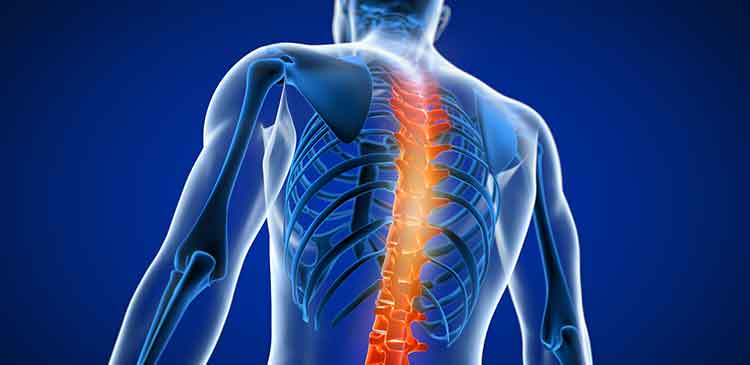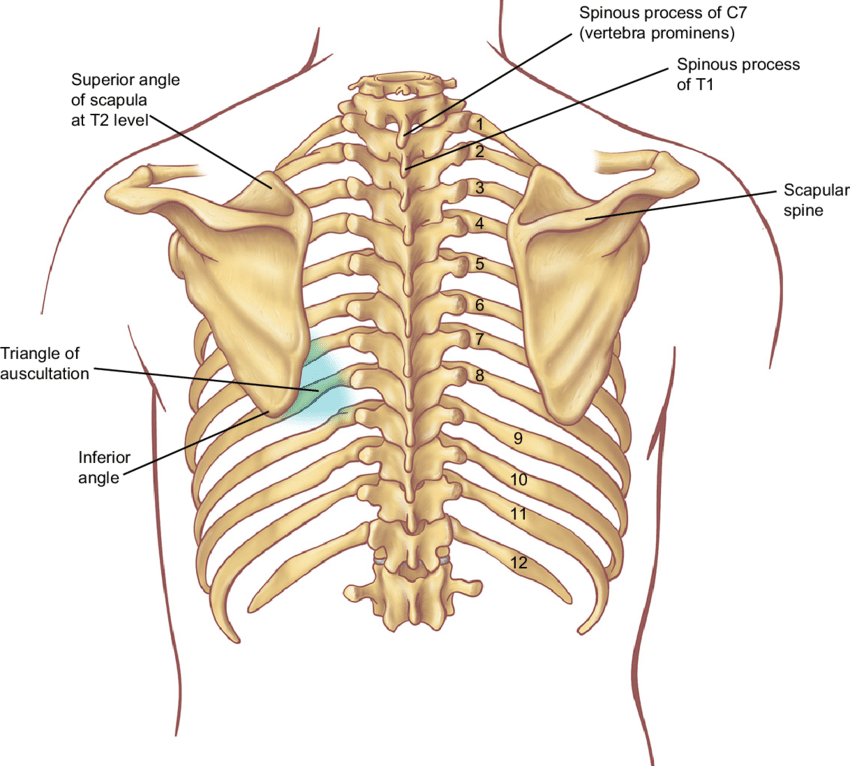The Thoracic Spine Is All About Mobility!

Improving your thoracic mobility can often help alleviate other problems.
The thoracic spine (mid back) is often underappreciated as most of us focus on the lumbar spine (low back) or cervical spine (neck) when it comes to pain and discomfort. However, some of the pain you may be experiencing in your neck or low back may be a result of dysfunction in your thoracic spine. Thoracic spine dysfunction can obviously lead to pain in the mid back and shoulder blade area, but it can also lead to shoulder pain, neck pain, low back pain, and even breathing problems!

The thoracic spine includes the middle 12 vertebrae of your 24-segment spinal column (7 cervical vertebrae and 5 lumbar). Quite simply they are located from roughly just above the shoulder blades to a line just above the lowest ribs. This section of the spine should curve backward slightly into what we call a thoracic kyphosis. The design of the thoracic spine is unique in that they also have an articulation with each individual rib (very important for breathing!) as well their typical articulation with the vertebrae above and below. Many muscles attach and run along the thoracic spine creating a very stable column for the rib cage to anchor to as well the shoulder blades (very important in shoulder function!). With so many important responsibilities the thoracic spine must maintain stability. However, in many cases, the thoracic spine tries to go overboard and gets very rigid (or stiff) at the expense of mobility. When this happens, the body must adjust such as recruiting the lumbar spine or cervical spine to bend more. It may also start to alter the position of the ribs or shoulder blades causing problems with the shoulder or breathing. The thoracic spine tends to lose mobility.
Improving your thoracic mobility can often help alleviate problems such as mid back pain, mild low back pain, shoulder discomfort, neck stiffness, and shortness of breath.
Luckily there are some simple exercises that can easily be performed at home to improve your thoracic mobility, thus allowing it to function efficiently and reduce pain in your back, neck, or shoulders!
Thoracic spine foam rolling
Perform for 60 seconds
Quadruped thoracic mobility
Perform 5 on each side for 3 sets
Thread the needle
Perform 5 on each side for 3 sets
We hope these exercises are helpful to those of you who have been experiencing some mid back, shoulder, low back, or neck pain.
